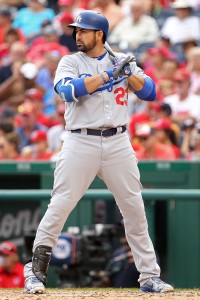After a dismal 2017 season, the Mets entered the offseason in search of improvements and a return to the form that the roster had achieved in the prior two campaigns. At the same time, reporting indicated that the front office would be asked to get things done without a payroll boost — if not, in fact, a spending reduction.
Though the Mets have gone on to make one of the winter’s biggest deals — a $39MM commitment to Jay Bruce that only really stands out against a slow market — questions about spending levels have continued to be raised by fans and the media. Mets COO Jeff Wilpon and GM Sandy Alderson held a discussion with reporters today to address the financial picture, and we’ll cover some of the highlights. (All links to Twitter accounts.)
While acknowledging “fan perception,” Wilpon says the organization has a “plan” for spending that it intends to adhere to (via MLB.com’s Anthony DiComo). That plan evidently does not come with a fixed number — Wilpon said “there’s no concrete line” — but he generally validated prior reporting by suggesting there’s a good chance the payroll will end up at or $10MM below last year’s mark. (Via DiComo and Mike Puma of the New York Post.)
That general range of spending is just inside the top half of the league’s thirty teams. Of course, some would argue that the major-market organization ought to be spending more. Wilpon rejected the notion that the team’s prior history of top-five payrolls should be a future guide, per James Wagner of the New York Times. Says Wilpon:
“I’d rather look at what we do in terms of wins and losses. Being top 5 in payroll, I don’t think that won us a World Series.”
Those arguing for a more generous outlay on players will likely not be thrilled with that explanation, or some of the other arguments advanced by Wilpon. Interestingly, the executive indicates, the club effectively continues to count David Wright’s full salary in tabulating its overall payroll despite the fact that he has been unable to play, with insurance covering 75% of the salary. Per DiComo, Wilpon says that the team figures things that way since it has to pay for the policy along with a quarter of the ongoing salary obligations. Plus, he said, the Mets must be careful not to reinvest those funds in case Wright is able to return and they again become obligated for the full remaining amount.
It does not seem as if he was asked about any savings the team netted from its mid-season trades in 2017, though no doubt that was offset in part by declines in revenue as the team skidded out of contention. Wilpon did acknowledge a connection between attendance and payroll levels, but it remains unclear just how those are set. (Also unclear: how that factor is worked into what Wilpon described, as noted above, as a plan that also leaves room for flexibility in making baseball ops decisions.)
It seems, then, as if the team won’t be making additional funds available for roster additions this winter, but that there is still some wiggle room that could allow for opportunism. One potentially interesting way of utilizing payroll, of course, would be an extension for excellent righty Jacob deGrom. Initial talks, though, failed to advance, leaving the sides to work out an arbitration salary. It is not clear whether the sides will make another attempt at hammering out a long-term contract before the start of the season.

